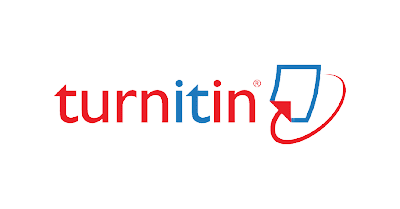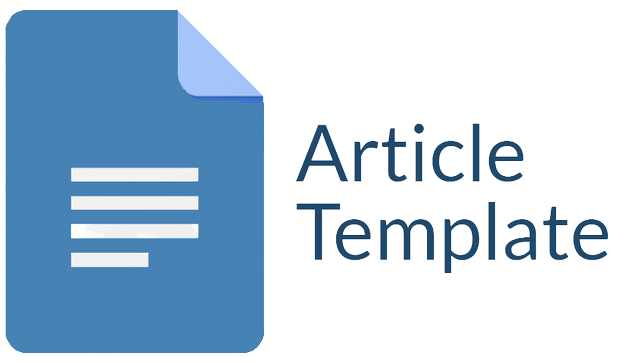PENERAPAN KOTA SPONS DI CHINA: EVALUASI UNTUK PEMBANGUNAN IBU KOTA MENDATANG
Abstract
Pemindahan Ibu Kota Negara (IKN) ke Kalimantan Timur, sebagaimana diatur oleh Undang-Undang Nomor 3 tahun 2022, akan mendorong pembangunan masif di wilayah tersebut. Namun, Provinsi Kalimantan Timur yang rawan bencana banjir memerlukan pendekatan khusus seperti penerapan konsep Kota Spons untuk meminimalisir risiko banjir dan mendukung keberlanjutan pembangunan IKN. Penelitian ini bertujuan untuk memberikan rekomendasi penerapan infrastruktur Kota Spons yang efektif dalam mengatasi permasalahan banjir di IKN melalui studi perbandingan terhadap penerapan konsep Kota Spons di China. Data sekunder digunakan dalam penelitian ini, mencakup variabel topografi, iklim, luasan wilayah, curah hujan, frekuensi banjir per tahun, dan tujuan ibukota negara. Metode yang digunakan adalah studi komparatif dengan analisis klaster untuk komparasi karakteristik kota, analisis performa untuk menilai efektivitas, dan analisis deskriptif untuk memberikan rekomendasi penerapan Kota Spons di IKN. Hasil penelitian menunjukkan bahwa Kota Nanjing dan Kota Haikou di China menjadi acuan perbandingan, dengan infrastruktur kolam retensi, atap hijau, dan lahan basah yang efektif mengatasi banjir. Infrastruktur lahan basah dinilai paling ekonomis dan efektif untuk diterapkan di IKN karena biaya perawatannya lebih rendah dibanding kolam retensi dan atap hijau.
Downloads
References
Ali Hakim, F., Banjarnahor, J., Suryani Purwanto, R., Khairul Rahmat, H., Dewa Ketut Kerta Widana Program Studi Magister Manajemen Bencana, I., & Keamanan Nasional, F. (2020). NUSANTARA: Jurnal Ilmu Pengetahuan Sosial Pengelolaan Obyek Pariwisata Menghadapi Potensi Bencana Di Balikpapan Sebagai Penyangga Ibukota Negara Baru 1. https://doi.org/10.31604/jips.v7i3.2020.607-612
Arief Rosyidie. (2013). Banjir: Fakta dan Dampaknya, Serta Pengaruh dari Perubahan Guna Lahan. In Fakta dan Dampaknya, Serta Penngaruh dari Perubahan Guna Lahan Jurnal Perencanaan Wilayah dan Kota (Vol. 24, Issue 3).
Bridges, C. C. (1966). Hierarchical Cluster Analysis (Vol. 18). @ Southern Universities Press.
Chan, F. K. S., Griffiths, J. A., Higgitt, D., Xu, S., Zhu, F., Tang, Y. T., Xu, Y., & Thorne, C. R. (2018). “Sponge City” in China—A breakthrough of planning and flood risk management in the urban context. Land Use Policy, 76, 772–778. https://doi.org/10.1016/j.landusepol.2018.03.005
Jia, H., Wang, Z., Zhen, X., Clar, M., & Yu, S. L. (2017). China’s sponge city construction: A discussion on technical approaches. In Frontiers of Environmental Science and Engineering (Vol. 11, Issue 4). Higher Education Press. https://doi.org/10.1007/s11783-017-0984-9
Jiang, Y., Zevenbergen, C., & Ma, Y. (2018). Urban pluvial flooding and stormwater management: A contemporary review of China’s challenges and “sponge cities” strategy. In Environmental Science and Policy (Vol. 80, pp. 132–143). Elsevier Ltd. https://doi.org/10.1016/j.envsci.2017.11.016
Kurniadi, A. (2019). Pemilihan Ibukota Negara Republik Indonesia Baru Berdasarkan Tingkat Kebencanaan. In JMB: Jurnal Manajemen Bencana (Vol. 5, Issue 2). http://jurnalprodi.idu.ac.id/index.php/MB
Machmud, S. K. M., & Nouri, M. N. (2024). Pengaruh Karakteristik Komuter di Kota-Kota Satelit pada Kawasan Jabodetabek. Edusaintek: Jurnal Pendidikan, Sains Dan Teknologi, 11(3), 1276–1295. https://doi.org/10.47668/edusaintek.v11i3.1286
Nguyen, T. T., Ngo, H. H., Guo, W., & Wang, X. C. (2020). A new model framework for sponge city implementation: Emerging challenges and future developments. In Journal of Environmental Management (Vol. 253). Academic Press. https://doi.org/10.1016/j.jenvman.2019.109689
Nguyen, T. T., Ngo, H. H., Guo, W., Wang, X. C., Ren, N., Li, G., Ding, J., & Liang, H. (2019). Implementation of a specific urban water management - Sponge City. In Science of the Total Environment (Vol. 652, pp. 147–162). Elsevier B.V. https://doi.org/10.1016/j.scitotenv.2018.10.168
Nouri, M. N., Fauzi, G. M., & Musyary, M. D. (2024). Dampak Pembangunan Jalan Tol Trans Jawa terhadap Peluang Kewirausahaan. Edusaintek: Jurnal Pendidikan, Sains Dan Teknologi, 11(3), 1129–1146. https://doi.org/10.47668/edusaintek.v11i3.1207
Nouri, M. N., Wicaksono, A. D., & Rachmawati, T. A. (2020). Dampak Pembangunan Jalan Tol Jombang-Mojokerto terhadap Alih Fungsi Lahan dan Kemandirian Pangan Jombang. Planning for Urban Region and Environment, 9(3), 59–70.
Nwafor. (1980). The Relocation of Nigeria’s Federal Capital: A Device for Greater Territorial Integration and National Unity. In GeoJournal (Vol. 4).
Rahmat, H. K., Syarifah, H., Kurniadi, A., Putra, R. M., Wahyuni, W., & Khairul Rahmat, H. (2021). Implementasi Kepemimpinan Strategis Guna Menghadapi Ancaman Bencana Banjir Dan Tsunami Di Provinsi Kalimantan Timur Implementation Of Strategic Leadership In Facing The Threat Of Flood And Tsunami In East Kalimantan Province. Jurnal Manajemen Bencana (JMB), 7(1), 1–18. https://doi.org/10.33172/jmb.v7i1.627
Sanjaya, A. R. (2020). Potensi Dampak Lingkungan Khususnya di Teluk Balikpapan Terhadap Pembangunan dari Kebijakan Pemindahan Ibu Kota Negara. https://nasional.kompas.com/read/2019/08/27/09284821/4-
Suprayitno, H., Muluk, A., Manan, A., & Sunarharum, T. M. (2020). Preliminary Overview of Three Purpose-Built Capital Spatial Plans Related to Indonesian Capital Relocation Plan. Journal of Infrastructure and Facility Asset Management, 2(2).
Wang, H., Mei, C., Liu, J. H., & Shao, W. W. (2018). A new strategy for integrated urban water management in China: Sponge city. In Science China Technological Sciences (Vol. 61, Issue 3, pp. 317–329). Springer Verlag. https://doi.org/10.1007/s11431-017-9170-5
Xia, J., Zhang, Y. Y., Xiong, L. H., He, S., Wang, L. F., & Yu, Z. B. (2017). Opportunities and challenges of the Sponge City construction related to urban water issues in China. Science China Earth Sciences, 60(4), 652–658. https://doi.org/10.1007/s11430-016-0111-8
Yang, S., Zhao, W., Liu, Y., Cherubini, F., Fu, B., & Pereira, P. (2020). Prioritizing sustainable development goals and linking them to ecosystem services: A global expert’s knowledge evaluation. Geography and Sustainability, 1(4), 321–330. https://doi.org/10.1016/j.geosus.2020.09.004
Yao, Y., Hu, C., Liu, C., Yang, F., Ma, B., Wu, Q., Li, X., & Soomro, S. e. hyder. (2022). Comprehensive performance evaluation of stormwater management measures for sponge city construction: A case study in Gui’an New District, China. Journal of Flood Risk Management, 15(4). https://doi.org/10.1111/jfr3.12834
Zhang, Z. (2022). Can the Sponge City Project improve the stormwater drainage system in China? ——Empirical evidence from a quasi-natural experiment. International Journal of Disaster Risk Reduction, 75. https://doi.org/10.1016/j.ijdrr.2022.102980
Copyright (c) 2024 Mh Nateq Nouri, Khairi Ahza Hail Keliwar, Zuhallfi Akbar Rinda, Vivian Alvianti, Dhea Ananda Putri

This work is licensed under a Creative Commons Attribution-ShareAlike 4.0 International License.
Jurnal allows anyone to compose, correct, and do derivative works, even for commercial purposes, as long as they credit for the original work. This license is the freest. It is recommended for maximum distribution and use of licensed material.
The submitted paper is assumed not to contain any proprietary materials that are not protected by patent rights or patent applications; The responsibility for technical content and protection of proprietary materials rests with the authors and their organizations and not the responsibility of journal or its editorial staff. The primary (first/appropriate) author is responsible for ensuring that the article has been viewed and approved by all other authors. The author's responsibility is to obtain all necessary copyright waivers to use any copyrighted material in the manuscript before submission.
Jurnal Pendidikan, Sains dan Teknologi allows the author(s) to hold the copyright without restrictions and allow the author(s) to retain publishing rights without restrictions. Jurnal Pendidikan, Sains dan Teknologi CC-BY-SA or an equivalent license as the optimal license for the publication, distribution, use, and reuse of scholarly work. Jurnal Pendidikan, Sains dan Teknologi allows the author(s) to hold the copyright without restrictions and allow the author(s) to retain publishing rights without restrictions. Jurnal Pendidikan, Sains dan Teknologi CC-BY-SA or an equivalent license as the optimal license for the publication, distribution, use, and reuse of scholarly work.
In developing strategy and setting priorities Jurnal Pendidikan, Sains dan Teknologi recognize that free access is better than priced access, libre access is better than free access, and libre under CC-BY-SA or the equivalent is better than libre under more restrictive open licenses. We should achieve what we can when we can. We should not delay achieving free in order to achieve libre, and we should not stop with free when we can achieve libre.
Jurnal Pendidikan, Sains dan Teknologi is licensed under a Creative Commons Attribution-ShareAlike 4.0 International License.
You are free to:
- Share a copy and redistribute the material in any medium or format
- Adapt a remix, transform, and build upon the material for any purpose, even commercially.
- The licensor cannot revoke these freedoms as long as you follow the license terms.






